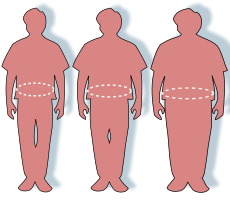 |
"Ebola" redirects here. For other uses, see Ebola (disambiguation).
| Ebola virus disease | |
|---|---|
Two nurses standing near Mayinga N'Seka, a nurse with Ebola virus disease in the 1976 outbreak in Zaire. N'Seka died a few days later.
| |
Ebola virus disease (EVD; also Ebola hemorrhagic fever, or EHF), or simply Ebola, is a disease of humans and other primatescaused by ebolaviruses. Signs and symptoms typically start between two days and three weeks after contracting the virus with afever, sore throat, muscular pain, and headaches. Then, vomiting, diarrhea and rash usually follow, along with decreased function of the liver and kidneys. At this time some people begin to bleed both internally and externally. The disease has a high risk of death, killing between 25 and 90 percent of those infected with an average of about 50 percent.This is often due to low blood pressure from fluid loss, and typically follows six to sixteen days after symptoms appear.
The virus spreads by direct contact with body fluids, such as blood, of an infected human or other animals.This may also occur through contact with an item recently contaminated with bodily fluids. Spread of the disease through the air between primates, including humans, has not been documented in either laboratory or natural conditions.Semen or breast milk of a person after recovery from EVD may still carry the virus for several weeks to months. Fruit bats are believed to be the normal carrier in nature, able to spread the virus without being affected by it. Other diseases such as malaria, cholera, typhoid fever, meningitis and other viral hemorrhagic fevers may resemble EVD. Blood samples are tested for viral RNA, viral antibodies or for the virus itself to confirm the diagnosis.
Control of outbreaks requires coordinated medical services, alongside a certain level of community engagement. The medical services include rapid detection of cases of disease, contact tracing of those who have come into contact with infected individuals, quick access to laboratory services, proper healthcare for those who are infected, and proper disposal of the dead through cremationor burial.Samples of body fluids and tissues from people with the disease should be handled with special caution. Prevention includes limiting the spread of disease from infected animals to humans. This may be done by handling potentially infected bush meatonly while wearing protective clothing and by thoroughly cooking it before eating it. It also includes wearing proper protective clothing and washing hands when around a person with the disease.
No specific treatment or vaccine for the virus is available, although a number of potential treatments are being studied. Supportive efforts, however, improve outcomes. This includes either oral rehydration therapy (drinking slightly sweetened and salty water) or giving intravenous fluids as well as treating symptoms. The disease was first identified in 1976 in two simultaneous outbreaks, one inNzara, and the other in Yambuku, a village near the Ebola River from which the disease takes its name. EVD outbreaks occur intermittently in tropical regions of sub-Saharan Africa. Between 1976 and 2013, the World Health Organization reports a total of 24 outbreaks involving 1,716 cases. The largest outbreak is the ongoing epidemic in West Africa centered in Guinea, Sierra Leoneand Liberia. As of 28 March 2015, this outbreak has 25,065 reported cases resulting in 10,413 deaths.
Signs and symptoms
The length of time between exposure to the virus and the development of symptoms (incubation period) is between 2 to 21 days,usually between 4 to 10 days. However, recent estimates based on mathematical models predict that around 5% of cases may take greater than 21 days to develop.
Symptoms usually begin with a sudden influenza-like stage characterized by feeling tired, fever, weakness, decreased appetite, muscular pain, joint pain, headache, and sore throat. The fever is usually higher than 38.3 °C (101 °F). This is often followed by vomiting, diarrhea and abdominal pain.[16] Next, shortness of breath and chest pain may occur, along with swelling, headaches andconfusion. In about half of the cases, the skin may develop a maculopapular rash, a flat red area covered with small bumps, 5 to 7 days after symptoms begin.
In some cases, internal and external bleeding may occur.This typically begins five to seven days after the first symptoms.All infected people show some decreased blood clotting. Bleeding from mucous membranes or from sites of needle punctures has been reported in 40–50 percent of cases. This may cause vomiting blood, coughing up of blood, or blood in stool.Bleeding into the skin may createpetechiae, purpura, ecchymoses or hematomas (especially around needle injection sites). Bleeding into the whites of the eyes may also occur. Heavy bleeding is uncommon; if it occurs, it is usually located within the gastrointestinal tract.
Recovery may begin between 7 and 14 days after first symptoms. Death, if it occurs, follows typically 6 to 16 days from first symptoms and is often due to low blood pressure from fluid loss. In general, bleeding often indicates a worse outcome, and blood loss may result in death.People are often in a coma near the end of life.Those who survive often have ongoing muscular and joint pain, liver inflammation, decreased hearing, and may have constitutional symptoms such as feeling tired, continued weakness, decreased appetite, and difficulty returning to pre-illness weight.Additionally they develop antibodies against Ebola that last at least 10 years, but it is unclear if they are immune to repeated infections. If someone recovers from Ebola, they can no longer transmit the disease.
source : http://en.wikipedia.org




 ,
,